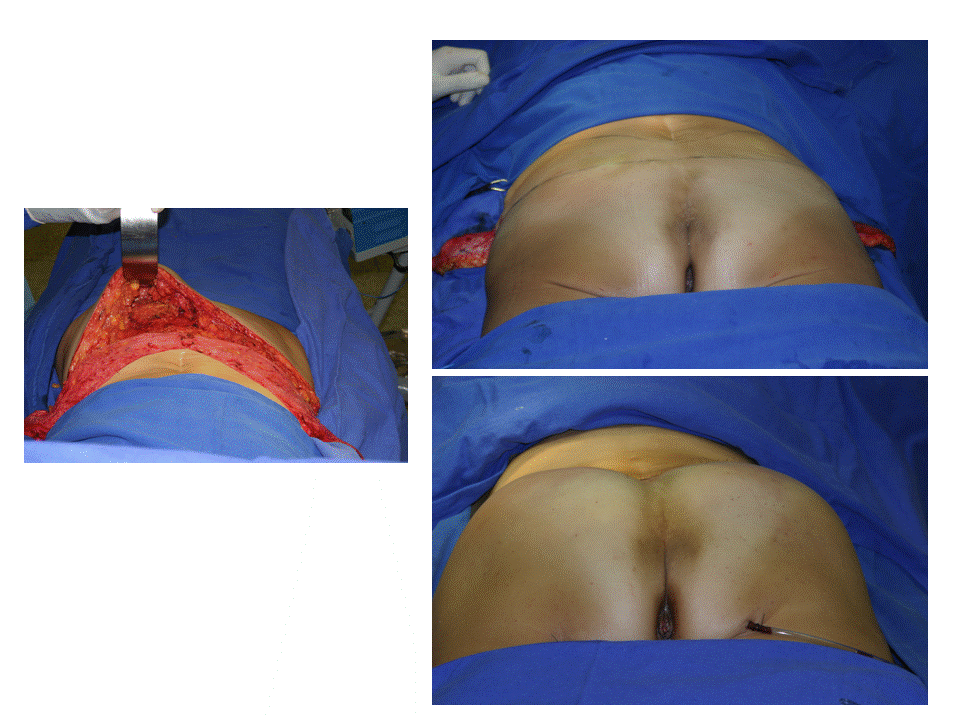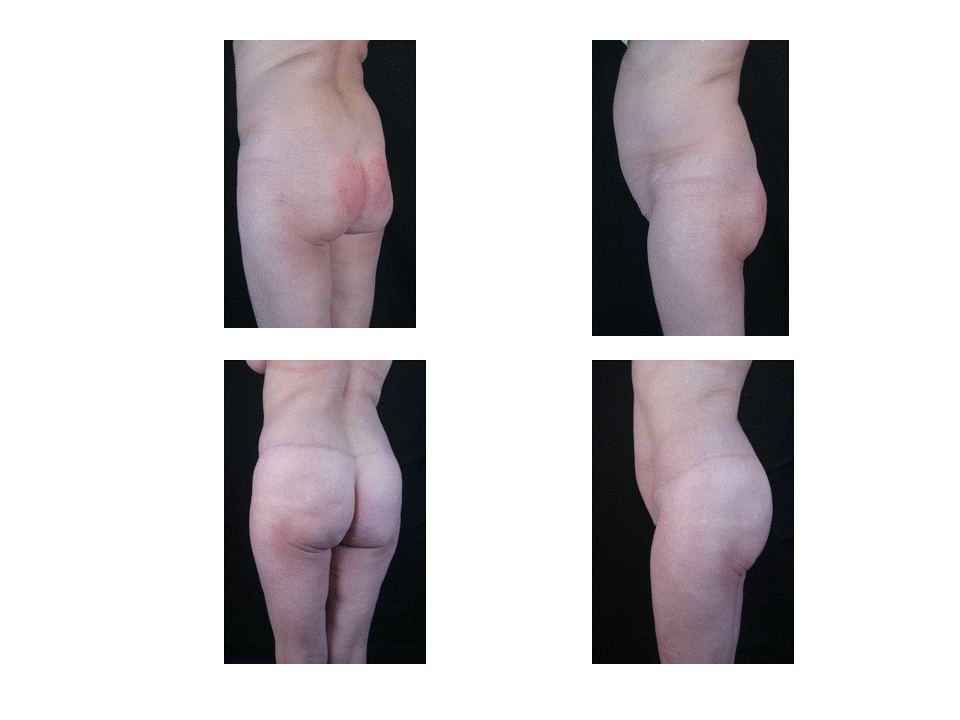Sunday, October 8, 2006
11213
Autologous Augmentation Gluteoplasty with Bilateral Dermal-Fat Lumbar-Hip Rotation Flaps
Purpose: The authors report a technique for auotaugmentation gluteoplasty for patients with excess skin, skin flaccidity, and/or gluteal ptosis- all common physical findings that result form massive weight loss after morbid obesity surgery.
Methods: In the lower back region, a fusiform-shaped area is de-epithelialized, and medially based adipocutaneous flaps are raise at the gluteal muscle fascia level. Next, incisions are made in the superior edge of the fusiform-shaped area down to the lumbar-hip musculoaponeurosis. The medial and the lateral segments of the dermal-fat flaps are undermined maintaining a large pedicle in the region corresponded to the gluteal perforators' position. The inferior adipocutaneos flaps are advanced over the dermal-fat flaps in an upward direction and sutured to the upper lumbar-hip skin border in a biplanar wound closure.Twelve patients with lipodystrophy of the lumbar region undergoing posterior trunk lift also underwent a concurrent bilateral lumbar-hip dermal-fat rotation flap for gluteal augmentation. Follow-up ranged from 6-48 months (mean = 12). Gluteal projection was assessed clinically, by standardized CT scan and by measurement with a soft-tissue goniometer.
Results: Satisfactory and durable gluteal augmentation was achieved in each of the patients in this series through the use of the lumbar-hip dermal-fat rotation flap technique. The durable projection observed clinically was corroborated by objective CT and goniometric data. This technique produced excellent lordosis at the lumbar region and the desired posterior projection of the buttock in all cases. One patient requested the same procedure a second time for further gluteal projection 4 years prior to her initial operation. Flaps were analyzed by CT scan, preoperatively and at 6 months postoperatively in 2 patients. When these values were measured by goniometer the results of augmentation in the posterior direction were 2 cm, on average. Three complications were observed. One hematoma occurred in the immediate postoperative period. This patient required re-operation and hematoma evacuation, but suffered no long-term sequelae and was pleased with her eventual result. Secondly, the patient who requested a second gluteoplasty 4 years after the first operation had a small area of superficial skin necrosis which healed within 30 days, resulting in a slightly widened scar. Finally, a seroma was observed in a patient who had previously undergone bariatric surgery, resolving after two weeks of continued bulb-suction drainage.
Conclusions: The authors describe an advantageous technique for autologous augmentation gluteoplasty utilizing bilateral medially-based de-epithelizedlumbar-hip dermal-fat rotation flaps. With this approach, satisfactory posterior projection of the buttocks is achieved. This technique is particularly applicable to patients with excess gluteal skin flaccidity, ptosis or redundant skin folds in the lower back that are often the result of massive weight loss following the surgical treatment of morbid obesity. Harmonic augmentation of the buttock region with good posterior projection is attainable with the dermal-fat rotation flap technique with minimal morbidity.


.
